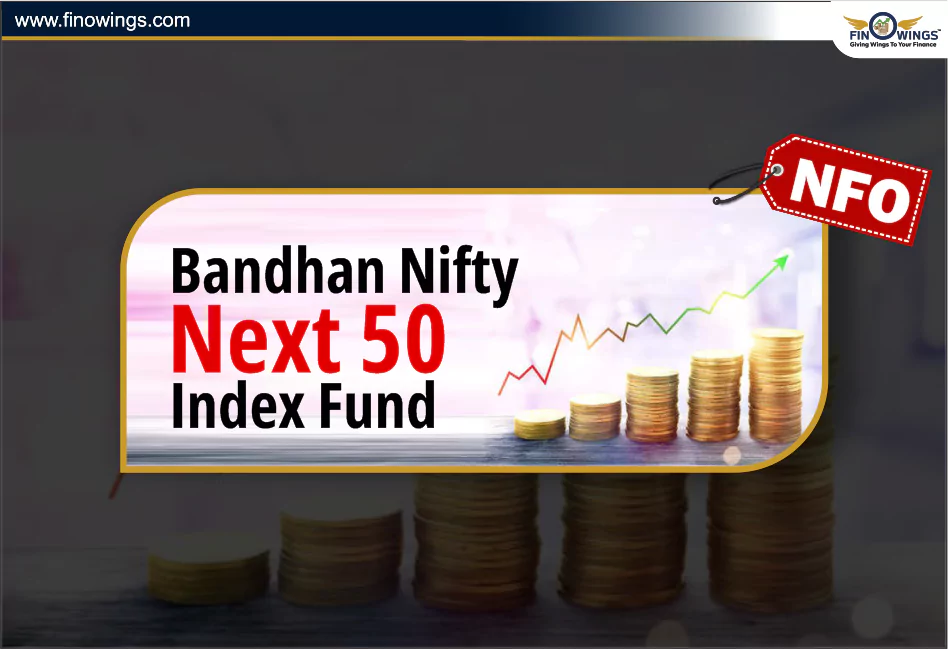Home >> Blog >> Bandhan Business Cycle Fund NFO: Date, Overview & NAV
Bandhan Business Cycle Fund NFO: Date, Overview & NAV

Table of Contents
- Bandhan Business Cycle Fund-Direct Growth: Complete Overview
- What is a Business Cycle?
- Why invest in the Business Cycle?
- Who should invest in this fund?
- Bandhan Mutual Fund Details
- Fund Overview
- How To Invest In The Scheme After The Closure of The NFO?
- The Objective of The Fund
- Peers of Bandhan Business Cycle Fund
- Risk Factors In Such Funds
- Past Performance of Business Cycle Funds
- Bandhan Business Cycle Fund-Growth Fund Managers:
- Conclusion
Bandhan Business Cycle Fund-Direct Growth: Complete Overview
The Bandhan Business Cycle Fund, a new scheme from Bandhan Mutual Fund under its AMC, Bandhan Asset Management Company Limited (formerly IDFC Asset Management Company Limited) has debuted. This open-ended equity scheme employs a business cycle-based investing approach, modifying sector allocations by the expansion, peak, contraction, and slump stages of the economic cycle.
Subscribers may join this new NFO from 10 September 2024 and the new fund offer will end on 24 September 2024. After that, this Mutual Fund Scheme will be available for continuous sale and repurchase on October 1, 2024. The Bandhan Business Cycle Fund NFO minimum subscription amount is Rs.1000 and in multiples of Rs.1 thereof. The scheme is a very high-risk scheme. There is no assurance that the scheme's investment goal will be met.
The CEO of Bandhan AMC, Vishal Kapoor, states that the fund "offers investors a 360-degree approach by tapping into economic cycles, equity trends, and sector dynamics." It is intended to manage risks by altering sector allocations in response to market conditions, diversify portfolios, and maximize returns."
What is a Business Cycle?
-
The natural ups and downs in economic growth that take place throughout time are referred to as the business cycle.
-
It usually consists of four stages: Peak (highest growth), contraction (declining growth), expansion (increasing economic activity), and slump (the lowest point of the cycle).
-
Every stage has a distinct impact on various economic sectors.
-
These cycles can be used by investors to spot opportunities and successfully manage risks.
Why invest in the Business Cycle?
-
Sector Cycle Insight: Focuses on sector-specific factors like supply, profitability, and demand while employing a bottom-up stock selection methodology.
-
Dynamic Allocation: Sector allocations are modified in response to changes in economic cycles.
-
Understanding the Economic Cycle: Uses macroeconomic variables to inform investment choices, such as GDP growth, interest rates, inflation, and political stability.
-
Equity Market Cycle Awareness: To keep ahead of market trends, keep an eye on total earnings, mood in the market, valuations, and capital flows.
-
Quantitative Assessment: Monitors high-frequency indicators actively to spot and take advantage of market opportunities.
-
Flexibility in Market Cap: Unbiasedly makes investments in large, mid, and small-cap markets.
-
Risk Control: Keeps cash levels flexible, allocating up to 15% of funds to risk management.
-
Well-Balanced Investment Approach: Combines a bottom-up stock selection strategy based on firm fundamentals, valuations, and management caliber with top-down macroeconomic analysis.
Who should invest in this fund?
-
Diversification Seekers:
Those trying to diversify their satellite holdings to potentially produce alpha.
-
Patient Investors:
Those looking to invest for the long term and achieve growth through SIP.
-
Risk tolerant Individuals:
Those who don't mind taking on more risk in the hope of earning larger profits.
Scheme Plan: The scheme is available in two options Bandhan Business Cycle Fund-Direct and Bandhan Business Cycle Fund-Regular.
Bandhan Mutual Fund Details
-
By AUM, it is among the top 10 asset managers in India. AUM for the business was Rs.1,33,773.76 crores as of March 31, 2024. As of March 31, 2024, 2.5% of the industry's AUM was held by Bandhan AMC.
-
The fund house provides investment products in debt, commodities, and stocks. It is present in more than 46 Indian cities, and more than 375 cities and towns have invested in it.
-
The fund house provides 58 main mutual fund plans to its investors. 10 of these are hybrid schemes, 25 are debt schemes, and 23 are equity schemes.
-
During the last three and five years, the fund's annualized returns have been approximately 8.31% and 9.06% respectively.
Click Here To Stay Updated With The Upcoming NFOs.
Fund Overview
|
Start Date |
10 September 2024 |
|
End Date |
24 September 2024 |
|
Allotment Date/Subscription Date/Re-open Date |
The scheme reopens on October 01, 2024, for continuous sale and repurchase. |
|
VRO Rating |
- |
|
Expense Ratio |
Nil |
|
Exit Load |
0.5% if units redeemed within 30 days |
|
AUM |
Rs.1,33,773.76 crore. |
|
Lock-in |
NA |
|
Stamp Duty |
0.005% (From July 1st 2020) |
|
Benchmark(s) |
Nifty 500 TRI |
|
Min. Investment |
Rs.1000 and in multiples of Rs.1. |
|
Risk |
Very High Risk |
|
Short-Term Capital Gains (STCG) |
For less than 1 year, a 20% tax is applicable. |
|
Long-Term Capital Gains (LTCG) |
For more than 1 year, a 12.50% Tax is applicable above the gain of Rs.1.25 lac in a financial year. |
How To Invest In The Scheme After The Closure of The NFO?
If you have missed participating in the NFO and now want to invest in the same Scheme on a continuous basis, then on October 01, 2024, when the Scheme will reopen; you will have the option to participate and invest directly in the Mutual Fund by spending at NAV based price by logging on to your Demat account and search for “Bandhan Business Cycle Fund” or directly with the AMC or simply click the ‘Banner’ below.
The Objective of The Fund
To create long-term capital gains by primarily investing in equities and equity-related securities, with an emphasis on riding business cycles by strategically allocating funds across different industries and stocks at various economic cycle stages. Nevertheless, there can be no assurance or guarantee that the scheme's investment goals will be met.
Asset Allocation (% of Total Assets) of the Scheme's portfolio will be as follows:
|
Types of Instruments |
Minimum Allocation (% of Total Assets) |
Maximum Allocation (% of Total Assets) |
|
Equity & equity related instruments selected based on the business cycle |
80 |
100 |
|
Equities & equity-related overseas securities |
0 |
20 |
|
Debt Securities and Money Market Instruments (including Government securities and securitized debt) |
0 |
20 |
|
Units issued by REITs & InvITs |
0 |
10 |
Peers of Bandhan Business Cycle Fund
|
Scheme |
1Y Return |
AUM (Rs.) / Fund Size (Rs.) |
|
Axis Business Cycles Fund - Regular Plan-Growth |
38.4% |
2841.11 Cr. |
|
Aditya Birla Sun Life Business Cycle Fund-Regular Plan-Growth |
33.65% |
1879.98 Cr. |
Since this scheme is a new scheme, hence no comparable data on its past performance against its peers is available.
Risk Factors In Such Funds
-
Any index fund has tracking errors, which can result in schemes producing returns that are inconsistent with the performance of the Nifty 500 Momentum 50 Index or any of the securities included in or covered by the index. These errors can be caused by a number of different things.
-
Overwhelming competition from both local and foreign firms will have a big impact on the industry.
-
A number of broad securities market conditions, including interest rates, currency exchange rates, and price and volume volatility in the capital markets, could have an impact on the value of the Scheme's investments.
-
The liquidity of the investments made by the Scheme may be restricted by trading volumes, settlement times, and transfer protocols.
-
Lending securities carries risks, including counterparty risks, volatility in collateral value, settlement, and liquidity.
Past Performance of Business Cycle Funds
|
Index Funds |
NAV (Rs.) |
Annualised Return |
Return / Risk |
|
ICICI Prudential Business Cycle Fund-Regular Plan-Growth |
23.52 |
42.55% |
Very High Risk |
|
Axis Business Cycles Fund - Regular Plan-Growth |
16.9 |
38.4% |
Very High Risk |
|
Aditya Birla Sun Life Business Cycle Fund-Regular Plan-Growth |
15.57 |
33.65% |
Very High Risk |
Bandhan Business Cycle Fund-Growth Fund Managers:
-
Mr. Vishal Biraia
-
Ms. Ritika Behera
-
Mr. Harshal Joshi
-
Mr. Gaurav Satra.
Conclusion
The fund has a profile that is high in risk. Your investing horizon and risk tolerance should be taken into account. This fund can be a suitable choice for your portfolio if you believe in the diversified strategy of investments and are willing to take on more risk in exchange for possibly bigger returns.
Disclaimer: This NFO analysis is provided solely for informative reasons and should not be construed as investment advice. Always conduct research and talk with a financial advisor before investing.
Frequently Asked Questions
A mutual fund is an established fund that is already open for investment and has a track record of performance, whereas an initial public offering (NFO) is a new fund that invites investors to purchase units.
You can apply for NFO via online platforms such as AMC’s website, and channel partner website, by filling out an application form, and the mobile apps of Fund House.
It's important to research the AMC performance before investing.
Applying for the NFO is just one click away. You can simply click here to buy best mutual fund.
NAV expands as Net Assets Value.
The minimum investment for the Scheme is Rs.1000 and in multiple of Rs.1 thereafter.





















